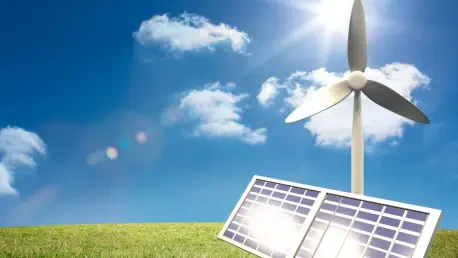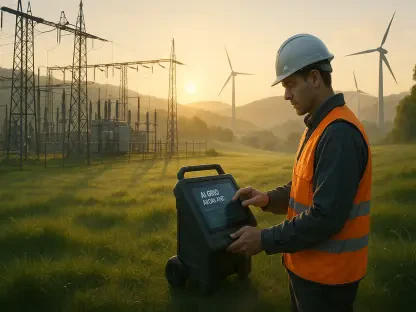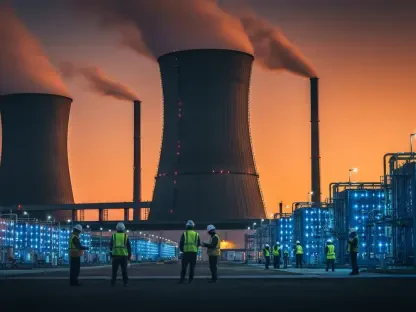The Spanish energy market has reached a watershed moment as it revamps grid voltage control regulations to better facilitate renewable energy integration. This development is part of Spain’s strategic push to enhance grid stability and reduce dependence on fossil fuels. As global renewable energy technology advances, the latest regulatory changes hold significant implications for the country’s energy infrastructure and economic landscape.
The recent updates to Spain’s grid rules represent a pivotal effort to transition the energy sector to a cleaner and more sustainable future. Catalyzed by a substantial blackout that disrupted Spain and Portugal due to voltage surges, these changes signify the Spanish government’s commitment to addressing flaws in historical grid management. The revised regulations seek to modernize the operational framework that has been largely stagnant for a quarter of a century, reflecting Spain’s drive toward renewable energy and technological innovation.
Shifting Paradigms in Energy Management
Historically, Spain’s energy grid has been dominated by conventional power plants such as coal, gas, nuclear, and hydraulic systems, which have been primarily responsible for controlling voltage and ensuring system reliability. However, the modern energy landscape necessitates a shift from these traditional paradigms. Renewable sources like wind and solar have gained a strong footing, prompting the need for updated voltage control rules that encompass these newer forms of energy.
While previous attempts to incorporate renewables faced delays due to rigid grid requirements, the present reforms mark a significant leap. The current changes allow renewable facilities to take up roles traditionally held by conventional power plants, diversifying the capabilities of the national grid. This strategic move not only responds to the urgent need for a balanced energy approach but also aligns with Spain’s larger sustainability goals.
New Opportunities and Challenges for Renewables
The allocation of voltage control responsibilities to renewable energy sources represents a significant pivot in Spain’s energy management strategy. By enabling wind and solar facilities to contribute to grid stability, Spain is setting a precedent for a more distributed and flexible energy system. While this transition aligns with global sustainability trends, it also poses technical challenges in accurately modeling renewable outputs for consistent voltage control.
Economic considerations further complicate this landscape, as renewable energy projects often face steep competitive hurdles within traditional frameworks. By integrating renewables into critical grid services, Spain fosters a more level playing field, which is poised to invigorate economic growth in the renewable sector. However, ensuring that smaller renewable firms are not overshadowed by resource-rich incumbents remains a priority.
Navigating Geographic and Technological Complexities
Spain’s diverse climate and regional energy profiles introduce unique variables in the grid integration process. Digital technologies, such as smart grids and microgrid solutions, offer promising avenues to address these regional disparities. As misunderstandings about the reliability of renewable sources persist, advances in energy storage and adaptive grid management are proving critical to overcoming these misconceptions.
The geographical challenges posed by Spain’s varied regions require localized solutions that can harness both distributed generation and existing infrastructure. By leveraging technological advancements, the country’s energy market can achieve enhanced resilience and efficiency, setting a template for other nations to follow in the renewable energy integration journey.
A Future Fueled by Renewables
Spain’s decision to revise its grid rules marks a transformative period for its energy sector, with ripple effects expected across technology adoption, economic structures, and regulatory frameworks. These reforms pave the way for a more decentralized and resilient energy infrastructure, where technological innovations—particularly in storage—will play a key role in elevating renewables’ role in grid stability.
Expert projections see Spain’s proactive stance as a potential model for other countries balancing the integration of renewables with grid reliability. As technological and regulatory advancements continue, the nation is well-positioned to lead the charge in a cleaner energy future.
Strategic Insights and Next Steps
The updating of Spain’s grid regulations calls for potential stakeholder engagement with agile practices and adopting future-proof technologies. This reform introduces new challenges and opportunities within the renewable energy market, requiring keen adaptability from businesses and consumers alike.
While Spain’s initiative serves as an excellent case study in renewable integration, ongoing efforts are essential to fully realize these changes’ transformative potential. Stakeholders must remain committed to supporting these advancements, ensuring every aspect of the energy sector embraces sustainability and innovation.









